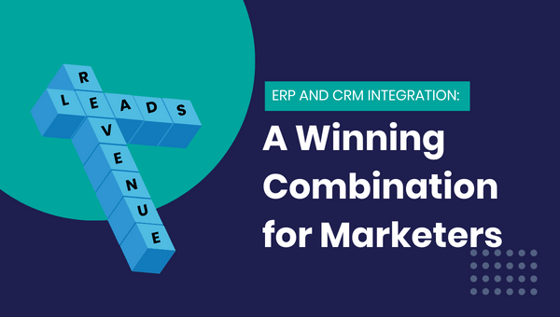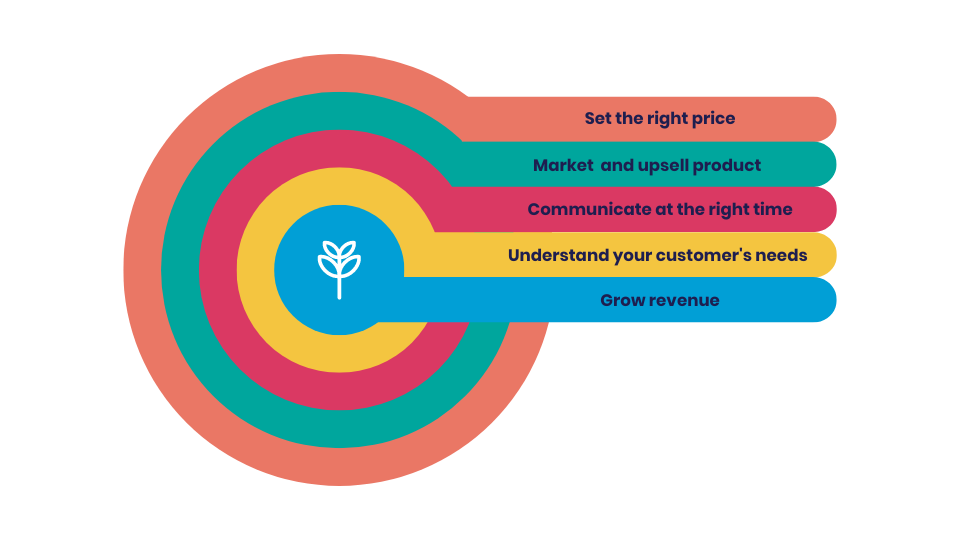


ERP and CRM Integration: A Winning Combination for Marketers




Hey marketers, step into the world of ERP and CRM, where data and customer experience come together in perfect harmony. Capture a crystal-clear view of your customer's journey and be able to analyze every step of the way.
In this blog post, we'll discuss:
- What is an ERP?
- What is a CRM?
- The benefit ERPs provide to marketers
- ERP & CRM Integration benefits
- ERP & CRM Integration Use Cases
Get to Know ERPs and CRMs: The Building Blocks of Data-Driven Marketing
When it comes to data-driven marketing, ERP and CRM systems are the building blocks you need to create a solid foundation. Collecting data across different customer journey stages is crucial for building out analytics and understanding your customers better. But what exactly are ERP and CRM systems, and how do they work together?
What is an ERP?
ERP stands for Enterprise Resource Planning. It's a system that helps manage the internal and external workings of an organization, including things like accounting, inventory management, and supply chain management.
Some examples of data that can be collected through ERP systems include:
- Sales data (revenue, sales by product or category, customer demographics)
- Inventory data (stock levels, product costs, supplier information)
- Financial data (profit margins, expenses, budgeting)
- Supply chain data (production schedules, delivery times, logistics information)
Exploring Sage 500
Sage is a well-known software company that offers a variety of ERP solutions for businesses of different sizes and industries. Sage offers ERP solutions such as Sage 500 and Sage X3 that can help businesses manage their financials, inventory, and supply chain operations.
What is a CRM?
CRM stands for Customer Relationship Management. It's a system that helps businesses manage and improve their interactions with customers. This includes things like sales, customer service, and marketing.
Some examples of data that can be collected through CRM systems include:
- Contact information (name, email, phone number, address)
- Interaction history (emails, calls, meetings)
- Marketing campaign data (open rates, click-through rates, conversion rates)
- Customer feedback and reviews
Exploring HubSpot
HubSpot is a well-known CRM software that offers a variety of tools for businesses of different sizes and industries. HubSpot CRM also includes marketing, sales, and service software to help businesses manage customer interactions, automate workflows, and track performance. HubSpot CRM can be easily integrated with ERP systems like Sage, allowing businesses to transfer data between their CRM and ERP systems seamlessly and have a complete view of their customer and financial data in one place.
Why is an ERP valuable to marketers?
ERP data provides marketers with deeper insight into the needs and behaviours of their customers. By leveraging the data from ERP systems in a CRM, marketers can create highly targeted campaigns that have increased relevance to customers, resulting in higher conversion rates and more satisfied customers. With an ERP and CRM integration, marketing teams can personalise campaigns using real-time data. Your CRM & ERP platforms become a perfect partnership.
For example, let’s say a company sells wine online. By analyzing the purchase data collected from its ERP system, the company may identify which wines and price points are popular among its customers. Marketers could then use this insight to create special promotions targeting those who previously bought particular wines or price points.
They could also use segmentation tools within their CRM system to target emails based on these insights for even greater accuracy.

The benefits of integrating ERP and CRM
When it comes to data-driven marketing, having a complete view of your customer is crucial. This is where ERP and CRM integration comes in. By integrating your ERP and CRM systems, you can bring together all of your data into one place, creating a single source of truth.
5 tangible benefits of integrating a CRM and ERP:
- Improved decision-making: With a complete view of your customer and sales data, you can make data-driven decisions that can improve your marketing campaigns, inventory management, and overall business operations.
- Increased efficiency: By integrating your ERP and CRM systems, you can automate many business processes and eliminate manual data entry. Your two systems speak the same language allowing processes such as creating deals once a quote is distributed.
- Better customer service and support: With an integrated ERP and CRM, you can track a customer's journey from their first interaction with your brand to their final purchase. This allows you to better understand your customer and improve customer service and support.
- More accurate forecasting: With a complete view of your sales data, you can accurately forecast future demand for products and services. This can help you optimize your inventory and pricing.
- Increased revenue: By improving your marketing campaigns, customer service, and overall business efficiency, you can ultimately increase your revenue. An integrated ERP and CRM can provide the data and insights you need to make informed decisions that can lead to increased sales and revenue.
The Sage & HubSpot Integration
One of the key benefits of integrating ERP and CRM systems is the ability to consolidate all of your data into one place, creating a single source of truth. This is precisely what the Sage & HubSpot Integration enables businesses to do.
By integrating Sage Accounting with HubSpot CRM, businesses can automate the transfer of financial data like invoices, payments and expenses from Sage Accounting to HubSpot CRM. This allows them to create deals and contacts in HubSpot CRM automatically from invoices in Sage Accounting, providing a complete view of customer interactions and financial data in one place. This improved data visibility can lead to better decision-making, increased efficiency and better customer service and support.
ERP & CRM Integration Use Cases
Use Case #1: Integrating Sales and Inventory Data
A potential use case for integrating a CRM and ERP system is to manage sales and operational data. By automating the flow of information between the systems, important details such as deal details, products sold, and customer information can be transferred and updated accordingly.
This use case example focuses on integrating sales and inventory data between the CRM and ERP systems. The goal is to create a single source of truth for the data and automate processes such as invoicing, inventory management, and customer service.
Use Case #2: Streamlining Sales and Credit Management
Another use case example is the automatic transfer of contact and company data from the ERP system to the CRM system. When a quote is sent in the ERP system, a deal can be automatically created within the CRM system as 'Closed Won', streamlining the sales process.
If your company offers a credit system, you can create a calculated field property in the CRM system, and the deal amount can be subtracted from this field to ensure the credit limit is not exceeded.
Integrating ERP and CRM systems is a powerful tool for marketers looking to create a data-driven strategy. Businesses can improve their decision-making, increase efficiency, and ultimately drive revenue with a complete view of the customer journey and access to accurate and up-to-date data.
The benefits of integrating ERP and CRM systems are clear and many, from improved customer service and support to more accurate forecasting and increased revenue.
If you're considering integrating your ERP and CRM systems, we would love to hear about your use case and discuss how we can help make it a reality. Get in touch with us today to schedule a consultation and see how your business can benefit from an integrated ERP and CRM system.









